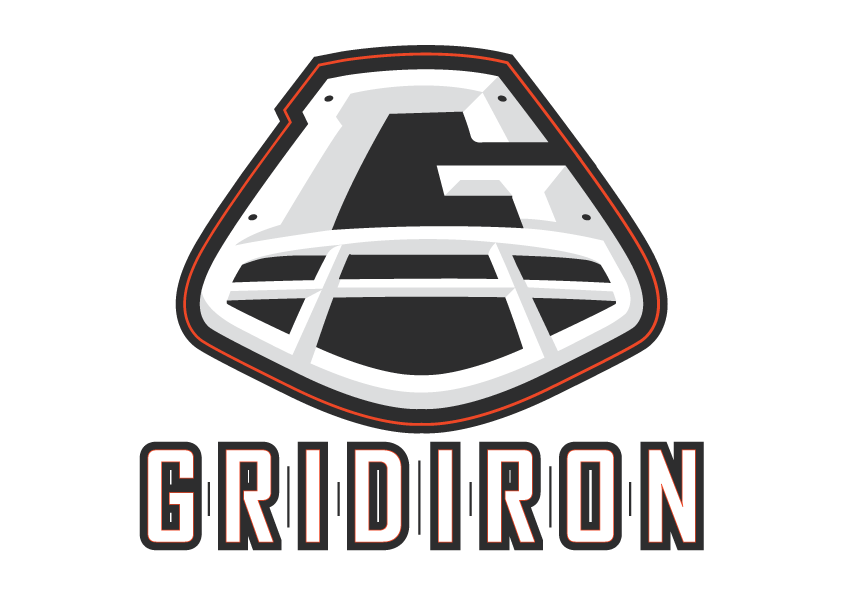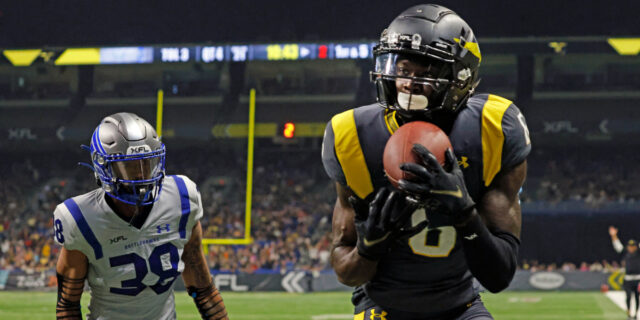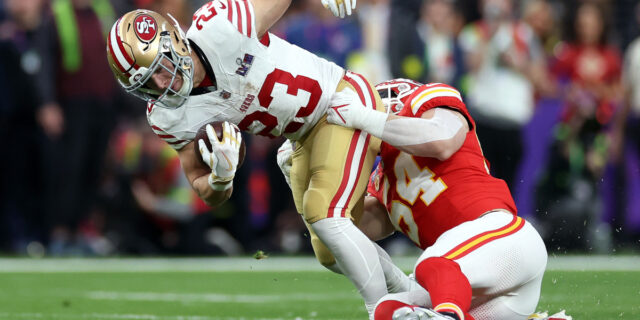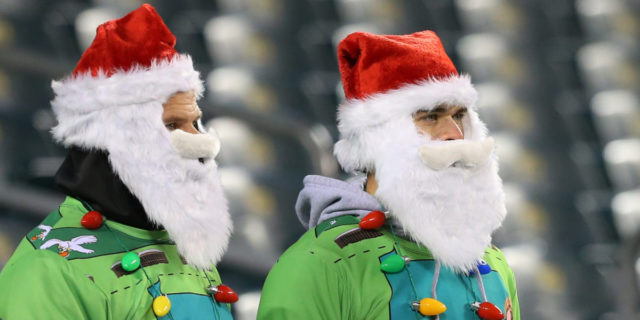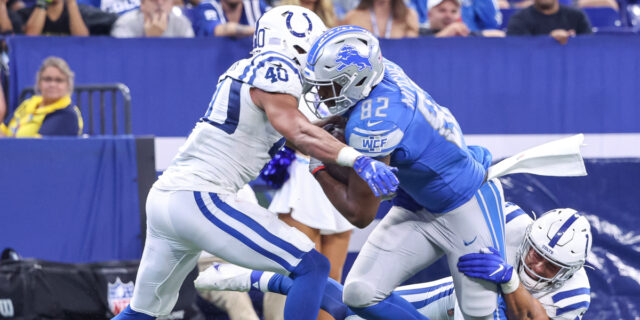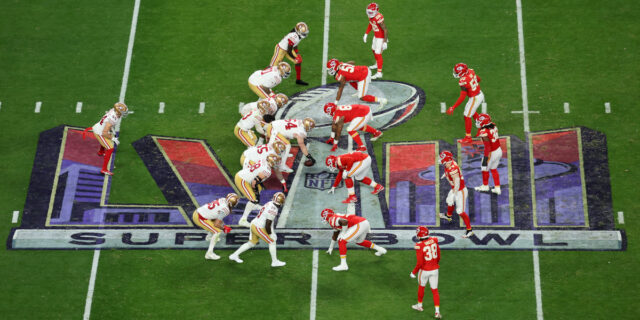
New Gold Dream?
“Coach Shanahan is a genius.” – George Kittle.
They are accustomed to the G-word in the Bay Area. From the tech wizards of Silicon Valley to the Golden State Warriors who revolutionised the NBA during their recent run of dominance in Oakland, those with the ingenuity to outwit opponents have played a starring role in the rich history of San Francisco and the surrounding cities.
Yet, even in 2019, it is an intellectual who built his legacy in the 1980s that casts the largest shadow over the city and their football team.
It’s been nearly 30 years since Bill Walsh brought down the curtain on an illustrious run in San Francisco, third Lombardi Trophy tucked under his arm, but the spectre still looms large. And not just for the team on which his legend was crafted. Walsh’s West Coast Offense, the ground-breaking scheme that powered the 49ers’ run, is perhaps the most emulated tactic in football history.
“Everybody copied our system, and that’s the ultimate compliment,” says former Niners running back Roger Craig, who was a key member of two of Walsh’s Super Bowl teams. “He was a genius. And the ultimate perfectionist. He had it down to a science. We’d go over and over the plays, and over and over. But he was always right.”
Expanding on Craig’s assessment, Hall of Fame wide receiver Jerry Rice adds: “It was like nothing I’d ever known. When I first came in, I could run a square out the way Bill wanted it run; I used to square it out and they rolled it out. On a slant, it was a 45-degree move; it had to be 45 degrees! If it wasn’t, Bill would let you know; and he would let the quarterback know if the ball wasn’t thrown exactly where it should be. It was important to get everything down to a science.
“The genius of Bill Walsh was how everything was about perfect timing. Once Joe Montana dropped back five steps, the ball was in the air before the receiver came out of the route. Fans wondered how we made the plays we did, but it was all about the system and timing. Joe was always going to put the ball in the exact spot where not only could I catch it, I could do something with it afterwards.”
Such is the mastery displayed over the majority of Walsh’s tenure that it’s easy to forget the difficult beginnings. The many sleepless nights endured by a coach who wondered if he could cut it at the highest level and considered walking away numerous times as San Francisco accrued only eight wins across his opening two campaigns. “We would speak regularly on the phone; I was trying to convince him he might win next Sunday, and not to jump off the bridge,” remembers Dick Vermeil, a close Walsh confidante who was coaching the Philadelphia Eagles.
Vermeil’s encouragement paid off. In his third season, Walsh brought all the pieces together, shepherding a team who went 13-3, shocked the world by knocking off the Dallas Cowboys with Dwight Clark’s ‘The Catch’ in the NFC Championship Game and completed the Cinderella Story when beating the Cincinnati Bengals in Super Bowl XVI.
A bright offensive mind enduring two seasons of struggle in San Francisco before enjoying a turnaround in year three. Sound familiar?
If there is one negative to Walsh’s tenure, it’s the unfortunate aftershock. The golden period that provided the foundation for San Francisco’s five Super Bowl titles and turned a perennial laughing stock into one of the NFL’s pre-eminent franchises also served to make life uncomfortable for those who have filled Walsh’s shoes. For they are measured against an impossible standard.
His replacement, defensive coordinator George Seifert, led the 49ers to two further championships with a team bearing his predecessor’s fingerprints, but no head coach has succeeded in replicating Walsh’s sustained dominance. There have been flickers in the intervening period, from Terrell Owens’ ‘The Catch II’ under Steve Mariucci to Jim Harbaugh’s run featuring straight NFC Championship Games and culminating in a Super Bowl XLVII loss to the Baltimore Ravens.
But nobody has attracted the admiration of Walsh, who was termed ‘The Genius’ not long after that first title and never relinquished the reputation. Until, at least in the 49ers’ halls, now. “[He’s] super meticulous, if you take an inch wrong step, he’s on you about it because he wants you to be as close to perfect as you can be,” says wide receiver Marquise Goodwin. “Obviously we have the human element, we can’t be perfect, but it doesn’t stop him from aiming for it.”
He is Kyle Shanahan, the former ball boy reared on the sideline of Candlestick Park during San Francisco’s last title run and nurtured by the 1990s’ most significant offensive schemer: two-time Super Bowl-winning former Denver Broncos coach Mike Shanahan.
For all the connections to NFL royalty, Kyle has stepped out dad’s shadow to fashion his own reputation. He shone first as the Houston Texans’ offensive coordinator, fulfilling a promise to Mike that his unit would rank in the NFL’s top five two successive years before they teamed up. When they did for the Washington Redskins, it heralded a brief sparkle as the pair gleaned exceptional results from rookie Robert Griffin III when mixing new spread concepts from the passer’s Baylor days with their own signature stretch-run/bootleg scheme.
A promising tenure was derailed by Griffin’s injury troubles, as well as the dysfunction that still reigns supreme in D.C., Mike retreating to life out of football while Kyle continued his embryonic career. First with a sole year as the Cleveland Browns’ offensive coordinator, then as the mastermind behind Atlanta Falcons signal-caller Matt Ryan’s MVP season in 2016. The Falcons’ incredible campaign may have ended in what is widely considered the most heartbreaking Super Bowl defeat of all-time – for which Shanahan certainly shoulders some blame – but the way in which he diced up defenses secured a golden reputation and led to widespread imitation of his plays.
It also earned Shanahan his first head-coaching job, and an unprecedented seven-year contract.
Yet his early story in San Francisco was much like Walsh’s, albeit with greater mitigation. Where the rubber met the road for both was what they inherited: indisputably one of the worst teams in football. In Shanahan’s case, it was the remnants of a club whose previous two head coaches each lasted just one season. Further derailing matters was the torn ACL suffered by Jimmy Garoppolo, the quarterback captured from the New England Patriots for a second-round pick, early in Shanahan’s second year.
But, with Garoppolo healthy, the coach’s third is also positively Walsh-ian. The 49ers enjoyed their first 8-0 start since 1990, driven by their coach’s signature attack. His run game gashed the Cincinnati Bengals for 259 yards in Week 2 and the Cleveland Browns for 275 three weeks later in a 31-3 Monday Night Football blowout. But bare ground numbers don’t hallmark the Shanahans’ success; it’s everything that sets up.
“The things he does to get people open are outrageous,” adds Kittle. “I remember the [Los Angeles] Rams game at the end of last season. I fake cut-block a guy then got up for a pass. He’s super creative and it’s a really fun offense to be a part of.”
In San Francisco’s 41-17 win over the Bengals, Goodwin scored the opening touchdown on a play in which he lined up as a tight end and leaked out over the middle, gaining 13.2 yards of separation from a befuddled Cincinnati defense. According to the wideout, there’s plenty more where that came from. “We’re only scratching the surface of what’s in the playbook,” he adds. “There are so many variations, so many different things he can do, which makes this offense dynamic because it’s multi-dimensional.”
As was the case in Walsh’s heyday, San Francisco’s success goes beyond just a brilliant, innovative offense.
“The thing with our offense was that they defined a new style,” says Hall of Famer Ronnie Lott, a heartbeat of San Francisco’s defense during their title-filled run. “That meant that we were somewhat overshadowed because of that innovation and creativity. But clearly we had some great players; Charles Haley and those guys. And that defense meant Joe, and he would tell you this himself, had two or three more opportunities than most quarterbacks per game.”
Throughout his tenure with the Niners, Walsh boasted a fearsome defense that featured the likes of Lott, Haley and Bill Romanowski – but didn’t receive the same level of attention as the Montana-led offense. Yet look back through those days and you’ll find many examples similar to Week 3 of this year, where defense bails out offense.
This time around, it was on the road against the Pittsburgh Steelers, when San Francisco turned the ball over five times and still prevailed 24-20 as the defense ensured those takeaways were not turned into touchdowns. “When you have five turnovers it makes it very hard to win,” admits Goodwin. “But when you have a defense and team playing like we do, as a full unit, it makes those wins come regardless of how many negative plays happen in a game.”
There is little chance of this 49ers defense being overshadowed. San Francisco forced 11 turnovers through the opening five weeks having only totalled seven in 2018, with a defensive line anchored by DeForest Buckner and bolstered with the additions of Dee Ford and Nick Bosa tormenting offensive lines.
“It makes everything so much easier. They’re penetrating every single play,” second-year linebacker Fred Warner says of the defensive front. “The pass rush is for sure a big part of it, having the additions of Dee and Bosa, on top of our guys who have been here, just improving throughout the offseason. I feel like everybody came back ready to go. We have a great back end, with our DBs and obviously our linebackers flying around. Working together as a group, having the same mindset and goals, I think that’s what has helped us a lot.”
The defense of the Walsh era was defined by the physicality of Lott, first at cornerback and then safety. Even on a defense featuring Romanowski, Haley and other hard hitters such as linebacker Keena Turner, it was Lott who brought the thump most regularly. “Ronnie Lott was the enforcer,” Romanowski admits. “When you needed a big play or big hit, he came up with it; one of those where you here the crowd go, ‘Oooooooo’. That’s what Ronnie brought to our defense.”
For Shanahan’s 49ers, that role appears to have been filled by high-priced free-agent signing Kwon Alexander. The 25-year-old has enjoyed a magnificent start in San Francisco after tearing his ACL with the Tampa Bay Buccaneers, helping set the tone for a swarming defense. “Kwon, I think he makes everyone around him better,” adds Warner. “I think that’s the true measure of a great leader, he’s come in from day one and brought great energy to the group, he flies around out there, has fun and he works hard every single day. I feel like just watching that and being next to him out there on the field gives me even more confidence while I’m out there.”
Alexander embodies the defense’s “all gas, no brake” mantra, a phrase coined by Robert Saleh who, after two testing years as defensive coordinator, is finally seeing a scheme that is loved by players for its simplicity bear fruit. “Coach Saleh’s a great coach, regardless of his future, I feel he’s a huge part of why we’re so successful,” enthuses Warner. “Our scheme, we don’t do a whole bunch but what we do; we do it fast and physical. Ever since I’ve gotten here he’s instilled in us the type of mindset that I think is starting to show through this year. We’ve been taking steps ever since I got here from last year but it’s starting to show on tape this year just having all the guys we have and everything moving a lot smoother.”
Things have been smoother across the board in a crucial third year for Shanahan and general manager John Lynch. There have again been significant injuries, but they have not proved debilitating like 2017 and 2018 for a roster that is clearly the deepest since the Harbaugh years. Their dismantling of the Browns in primetime was a performance to silence the doubters, not that the Niners care about those questioning their status as contenders.
“I don’t worry about haters, I don’t worry about doubters,” Goodwin said. “Because their opinions are coming from cheap seats. They aren’t in our locker room, don’t practice with us on the field; they’re only opinions. I don’t focus on their energy at all.”
Such is the nature of the modern NFL that sustained success is nearly impossible, outside of Bill Belichick and Tom Brady’s remarkable run with the New England Patriots. But, with the former closing on his 70th birthday and the latter well beyond 40, a void could soon appear. Poised to be filled by the latest genius on the sideline and next wave of precocious stars on the field. “We are a very young team,” concludes Kittle. “There’s a lot of potential.”
This article originally appeared in Issue XLIX of Gridiron magazine – for individual editions or subscriptions, click HERE
